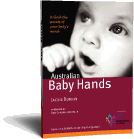Two Languages & A Baby
Two questions I get asked regularly are:
- What is the best way to introduce more than one language to my baby?
- If introducing my baby to two languages already, treat how do I incorporate baby sign language into this process?
In today’s multi-cultural society, no rx many children are exposed to more than one language from birth. Parents approach this differently but there are two predominant schools of thought on how to raise a bilingual baby:
- The first is to separate the language by person
- The second is to separate the language by place
The first approach is also known as the “one parent one language” approach and is where one parent or caregiver uses one language while the other parent or caregiver uses another language.
The second approach is where one language is used in the home, the “family language”, and the other language is used outside the home or in the community.
So how can parents then incorporate baby sign language into this environment?
The way to incorporate baby sign language into your baby’s life will depend on which school of thought you are using above.
If you are separating the language by person, it is important that both parents also use the basic signs when they say the word in their language. For example if you speak English and your partner speaks Spanish, when introducing a word such as “milk” you would say the word “milk” in English and introduce the sign for that word. Your partner would introduce the word “milk” in Spanish (“leche”) while signing the word “milk”.
If you are separating the language by place, it is important to use one language with your baby sign language consistently in the home but whenever outside the home (or in the community) that the second language is always used in conjunction with baby sign language. For example, home may be where you would speak Spanish and sign the word and then anywhere outside the home, you would use English and sign language. For this approach, you could also try to include family and friends in the process by encouraging them to sign some basic words to your baby ensuring that they use one language inside the home and the second language outside the home. After all, the more your baby sees the signs, the quicker your baby will understand what it is you are trying to communicate.
While oral communication is difficult for your baby at six months of age, baby sign language is the tool that can help close the gap of communication until your baby can physically speak in one of the other languages you maybe introducing them to.
Happy Signing!
- Please feel free to re-publish this article on your website including the authors bio details below in full.
Article written by Jackie Durnin:
Get up to date news on baby sign language at https://www.australianbabyhands.com. Read more articles from Jackie Durnin and stories from parents using sign language with their babies.
